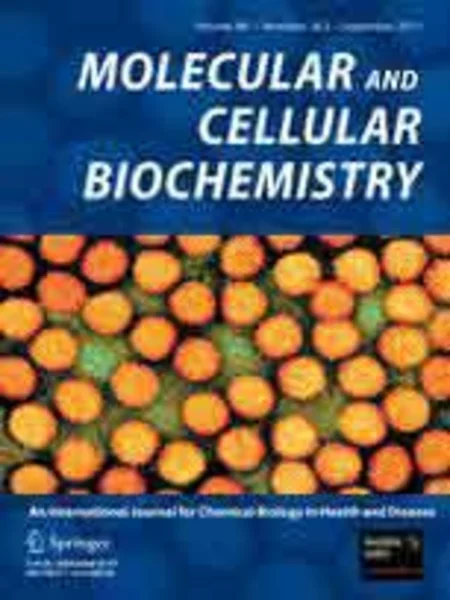-
anticancer potential of rhamnocitrin 4′-β-d-galactopyranoside against n-diethylnitrosamine-induced hepatocellular carcinoma in rats
جزئیات بیشتر مقاله- تاریخ ارائه: 1392/07/24
- تاریخ انتشار در تی پی بین: 1392/07/24
- تعداد بازدید: 1181
- تعداد پرسش و پاسخ ها: 0
- شماره تماس دبیرخانه رویداد: -
the hepatoprotective activity of flavonoid rhamnocitrin 4′-β-d-galactopyranoside (rgp) obtained from leaves of astragalus hamosus l. against n-diethylnitrosamine (dena)-induced hepatic cancer in wistar albino rats was evaluated. hepatic cancer in rats was induced by single-dose intraperitoneal administration of dena (200 mg/kg). induction of hepatic cancer was confirmed after 7 days of dena administration by measurement of elevated level of serum α-feto protein (afp). administration of dena in a single dose lofted the levels of serum biochemical parameters like alanine aminotransferase, aspartate aminotransferase, alkaline phosphatase, total bilirubin, total protein and afp. antioxidant enzymes like superoxide dismutase (sod), catalase (cat), glutathione peroxidase (gpx), glutathione-s-transferase (gst) and lipid per oxidation (lpo) were annealed significantly by administration of rgp in a dose-dependant manner. the histopathological examination of rat liver section was found to reinforce the biochemical observations significantly. it was observed that a substantial and dose-dependent reversal of dena-diminished activity of antioxidant enzymes like sod, cat, gpx, gst and the reduced dena-elevated level of lpo with a marked change. any elevation in the levels of serum markers along with suppression of free radical formation by scavenging the hydroxyl radicals is significantly prevented by rgp. it also modulates the levels of lpo and perceptibly increases the endogenous antioxidant enzymes level in dena-induced hepatocellular carcinogenesis. the findings suggest that rgp prevents hepatocellular carcinoma by suppressing the marked increase in the levels of serum marker enzymes, and suppresses the free radical by scavenging hydroxyl radicals.
مقالات جدیدترین رویدادها
-
استفاده از تحلیل اهمیت-عملکرد در ارائه الگوی مدیریت خلاقیت سازمانی و ارائه راهکار جهت بهبود
-
بررسی تاثیر ارزش وجوه نقد مازاد بر ساختار سرمایه شرکت های پذیرفته شده در بورس اوراق بهادار تهران
-
بررسی تأثیر سطح افشای ریسک بر قرارداد بدهی شرکت های پذیرفته شده در بورس اوراق بهادار تهران
-
بررسی تأثیر رتبه بندی اعتباری مبتنی بر مدل امتیاز بازار نوظهور بر نقد شوندگی سهام با تأکید بر خصوصی سازی شرکت ها
-
تأثیر آمیخته بازاریابی پوشاک ایرانی بر تصویر ذهنی مشتری پوشاک ایرانی (هاکوپیان)
-
مطالعه اثر بسته بندی فیلم ژلاتین و اسانس زیره سبز بر رشد باکتری های انترو باکتریاسه، سرمادوست و کپک و مخمر در فیله مرغ تحت شرایط یخچالی
-
مهم ترین گیاهان دارویی مورد استفاده در درمان بیماری های اعصاب و روان
-
آشکارسازی ساختمان های تخریب شده بر اثر زلزله درمدت زمان کوتاه با استفاده از تصاویر ماهواره ای با قدرت تفکیک بسیار بالا
-
effects of nails skew angle on soilnailing systems performance
-
investigating the cross-section and structural geometry effects on response of flat scissor-type structures in deployed configuration
مقالات جدیدترین ژورنال ها
-
مدیریت و بررسی افسردگی دانش آموزان دختر مقطع متوسطه دوم در دروان کرونا در شهرستان دزفول
-
مدیریت و بررسی خرد سیاسی در اندیشه ی فردوسی در ادب ایران
-
واکاوی و مدیریت توصیفی قلمدان(جاکلیدی)ضریح در موزه آستان قدس رضوی
-
بررسی تاثیر خلاقیت، دانش و انگیزه کارکنان بر پیشنهادات نوآورانه کارکنان ( مورد مطالعه: هتل های 3 و 4 ستاره استان کرمان)
-
بررسی تاثیر کیفیت سیستم های اطلاعاتی بر تصمیم گیری موفق در شرکتهای تولیدی استان اصفهان (مورد مطالعه: مدیران شرکتهای تولیدی استان اصفهان)
-
بررسی رابطه بین ویژگی های آنتروپومتریکی با آسیب های شایع دانش آموزان دونده شهرستان بجنورد
-
ارائه مدلی یکپارچه از تعریف و ابعاد هویت مکان و تعیین شاخص های سازنده هویت؛ نمونه مورد مطالعه: ساکنین شهر شیراز
-
مطالعه تطبیقی ملیله کاری اردبیل و زنجان
-
بررسی پیش بینی میل به گردش شغلی بر اساس ابعاد درگیری شغلی و منابع شغلی کارکنان اداره کل ورزش و جوانان استان همدان
-
the karkheh river streamflow forecast based on the modelling of time series




سوال خود را در مورد این مقاله مطرح نمایید :